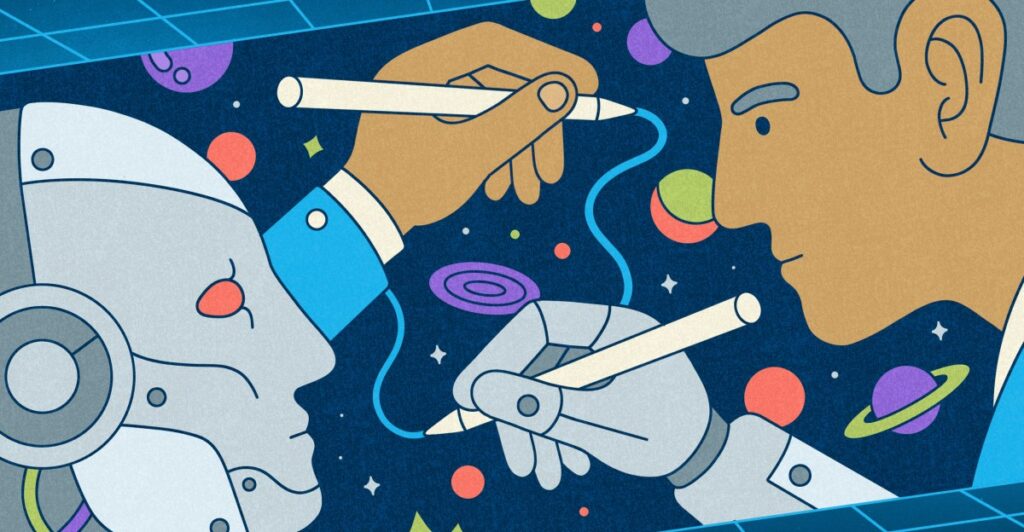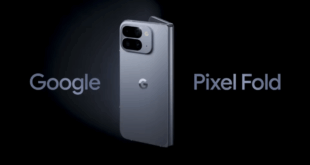
Sendi Jia, a designer running her own studio between Beijing, China, and London, England, says she mainly uses AI generators like DALL-E to make fake photos for background panels or websites when her clients don’t have access to real ones. That’s helped clients with limited budgets, but it’s also exposed just how much of the creative process AI can replace. Recently, a potential client working in a university contacted Jia about creating the logo for a new project. Then, they changed their mind. They had used AI to make it, they said.
Chinese graphic artists are rapidly experiencing the impact of image generators on their day-to-day work: the technology enables copycats and profoundly shifts clients’ perception of their work, specifically in terms of how much that work costs and how much time it takes to produce. Freelance artists or designers working in industries with clients that invest in stylized, eye-catching graphics, like advertising, are particularly at risk.
Long before AI image generators became popular, graphic designers at major tech companies and in-house designers for large corporate clients were often instructed by managers to crib aesthetics from competitors or from social media, according to one employee at a major online shopping platform in China, who asked to remain anonymous for fear of retaliation from their employer.
Where a human would need to understand and reverse engineer a distinctive style to recreate it, AI image generators simply create randomized mutations of it. Often, the results will look like obvious copies and include errors, but other graphic designers can then edit them into a final product.
“I think it’d be easier to replace me if I didn’t embrace [AI],” the shopping platform employee says. Early on, as tools like Stable Diffusion and Midjourney became more popular, their colleagues who spoke English well were selected to study AI image generators to increase in-house expertise on how to write successful prompts and identify what types of tasks AI was useful for. Ultimately, it was useful for copying styles from popular artists that, in the past, would take more time to study.
“I think it forces both designers and clients to rethink the value of designers,” Jia says. “Is it just about producing a design? Or is it about consultation, creativity, strategy, direction, and aesthetic?”
“You might get a good result, but there will inevitably be dozens or even hundreds of poor ones … Personally, I see [AI image generators] as more of a toy than a tool.”
At ad agencies, for example, graphic designers work on comprehensive strategies for campaigns, aiming to create iconic, recognizable visual identities across a variety of formats. As such, AI image generators are less useful because they don’t produce anything particularly unique, according to Erbing, a graphic designer in Beijing who has worked with several ad agencies and asked to be called by his nickname.
“Each project faces different problems, and designers are there to solve specific problems, not to create identical visuals,” he says. “Sometimes, the process of thinking through a project takes longer than actually creating the visuals.”
When faced with more complex tasks, AI’s utility dwindles. Image generators are capable of creating many images, but that does not replace the work of understanding what an ad campaign needs to establish a visual identity and communicate what it is the client is selling and why people should buy it. Then, translating those concepts to the AI productively is its own challenge. Among graphic designers in China, there’s a joke that using an AI image generator is like gacha, referring to addictive games where users spend money to receive randomized items and find out what they won.
“You might get a good result, but there will inevitably be dozens or even hundreds of poor ones,” Erbing says. “Personally, I see [AI image generators] as more of a toy than a tool.”
Across the board, though, artists and designers say that AI hype has negatively impacted clients’ view of their work’s value. Now, clients expect a graphic designer to produce work on a shorter timeframe and for less money, which also has its own averaging impact, lowering the ceiling for what designers can deliver. As clients lower budgets and squish timelines, the quality of the designers’ output decreases.
“There is now a significant misperception about the workload of designers,” Erbing says. “Some clients think that since AI must have improved efficiency, they can halve their budget.”
But this perception runs contrary to what designers spend the majority of their time doing, which is not necessarily just making any image, Erbing says.
Erbing, like other designers, hopes AI image generators can become more useful to graphic designers in the future, and notes that people’s perception of their usefulness outpaces their actual application. In the meanwhile, it is twisting the clients’ view of the usefulness of the artists themselves.
 Latest World Breaking News Online News Portal
Latest World Breaking News Online News Portal






